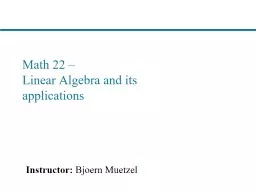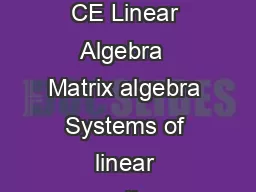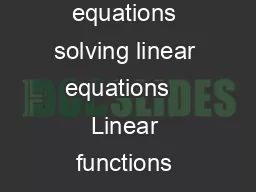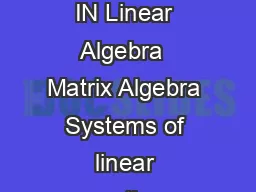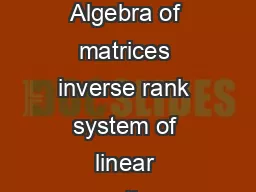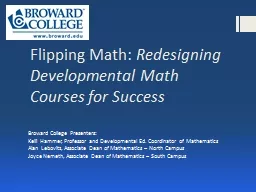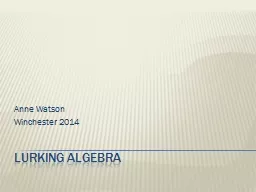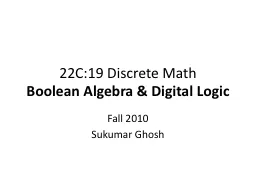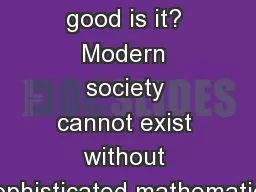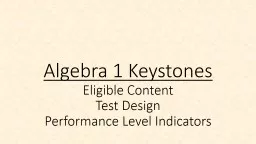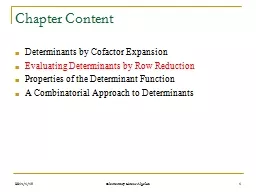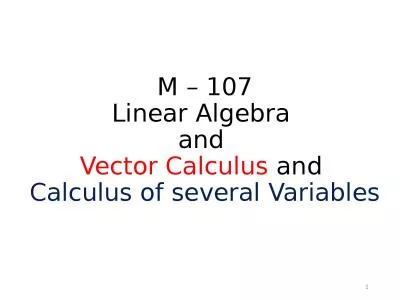PPT-Math 22 – Linear Algebra and its applications
Author : cheryl-pisano | Published Date : 2020-01-13
Math 22 Linear Algebra and its applications Instructor Bjoern Muetzel Applications NETWORKS MARKOV CHAINS AND GOOGLES PAGE RANK ALGORITHM Summary Transitions or
Presentation Embed Code
Download Presentation
Download Presentation The PPT/PDF document "Math 22 – Linear Algebra and its appl..." is the property of its rightful owner. Permission is granted to download and print the materials on this website for personal, non-commercial use only, and to display it on your personal computer provided you do not modify the materials and that you retain all copyright notices contained in the materials. By downloading content from our website, you accept the terms of this agreement.
Math 22 – Linear Algebra and its applications: Transcript
Download Rules Of Document
"Math 22 – Linear Algebra and its applications"The content belongs to its owner. You may download and print it for personal use, without modification, and keep all copyright notices. By downloading, you agree to these terms.
Related Documents

